Sean Scully @ Houghton Hall
23rd April – 29th October 2023
Smaller Than the Sky
Where an installation is sited is often as important as the installation itself. By complementing the work it can elevate it to more than just the sum of its parts. Having seen Scully’s sculptures immersed in the expansive grounds of Houghton Hall and also surrounded by the Palladian architecture of the house itself, it’s almost inconceivable to picture them in the conventional white cube of a contemporary art space.
This is not to say that the works blend in with their surroundings, because they don’t. The monumental sculptures made of steel, stone, glass and marble, if anything, are conspicuous by the very fact that they are not in tune with the space they occupy. What Scully is demonstrating here is how emphasising the materiality of the work, forces the viewer to reflect on that material and the site itself.
The vast lawn is punctured by the ‘Crate of Air’. What is produced are two variations of space. One the seemingly infinite lawn leading from the house as far as the eye can see, the other the steel framed crate. A crate typically encloses space, but here it doesn’t. The space is both framed yet also open.
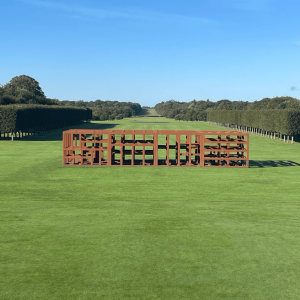
‘Crate of Air’ (2018)
Interestingly this concept of the enclosed space is explored by Rachel Whiteread’s Houghton Hut , also in the grounds.
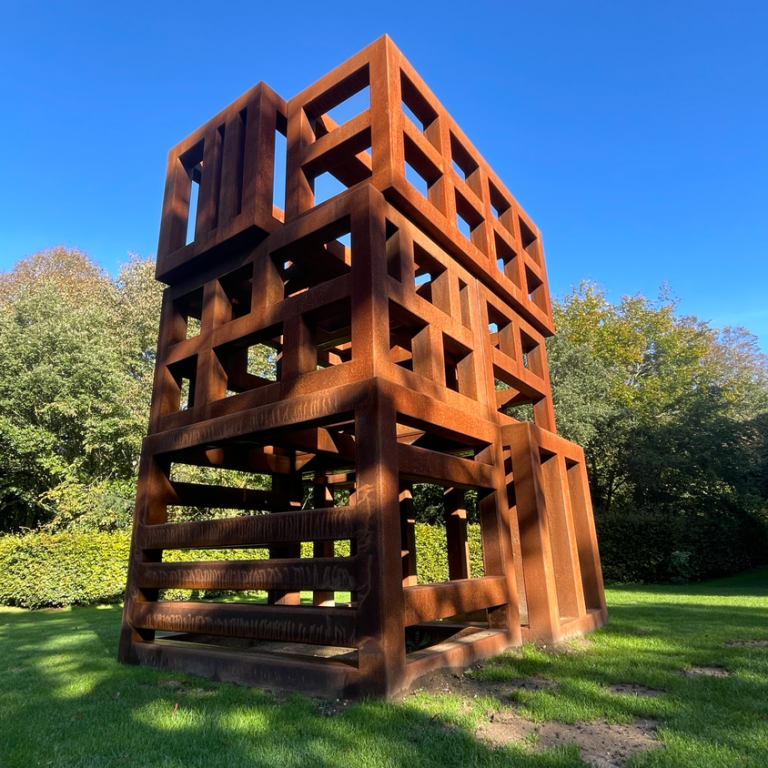
‘Air Cage’ – Sean Scully (2020)
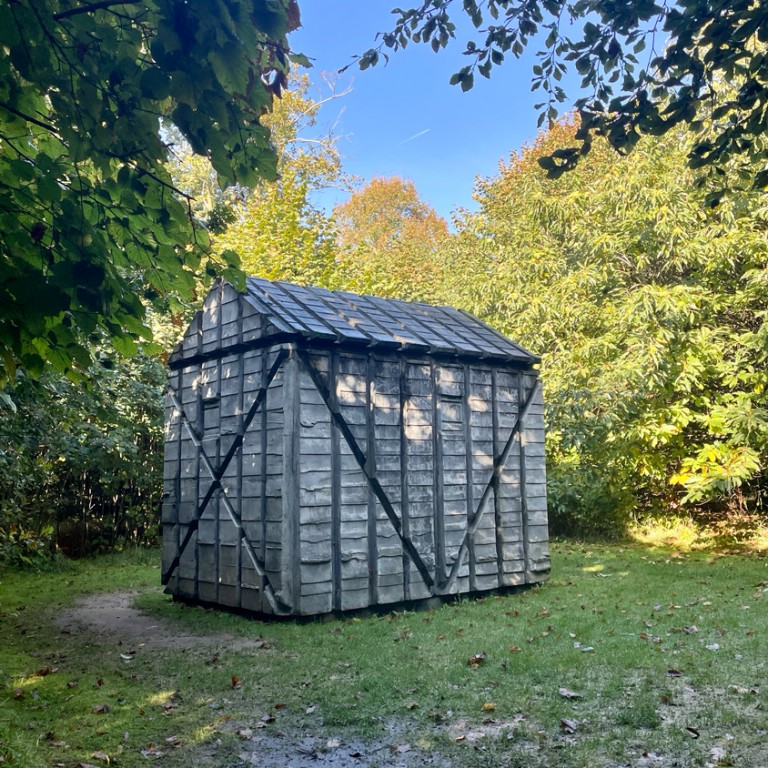
‘Houghton Hut’ – Rachel Whiteread (2015)
Whiteread and Scully are both exploring the notion of materiality and space but present it in different ways. Whiteread’s Houghton Hut takes negative space and, by using concrete, gives it a form that is in complete contrast to the space it represents. A void made heavy. Scully on the other hand with Age Cage gives the space form by framing it, but still alludes to its lightness despite the use of steel. The space is still visible in its original form.
Throughout the exhibition Scully plays with our perceptions of scale, form and materiality. The forms are often repetitive, stacked blocks creating cuboidal structures or stacked discs forming quasi cylindrical shapes. What differs are the materials that he uses and how our perceptions change according to the choices he makes.
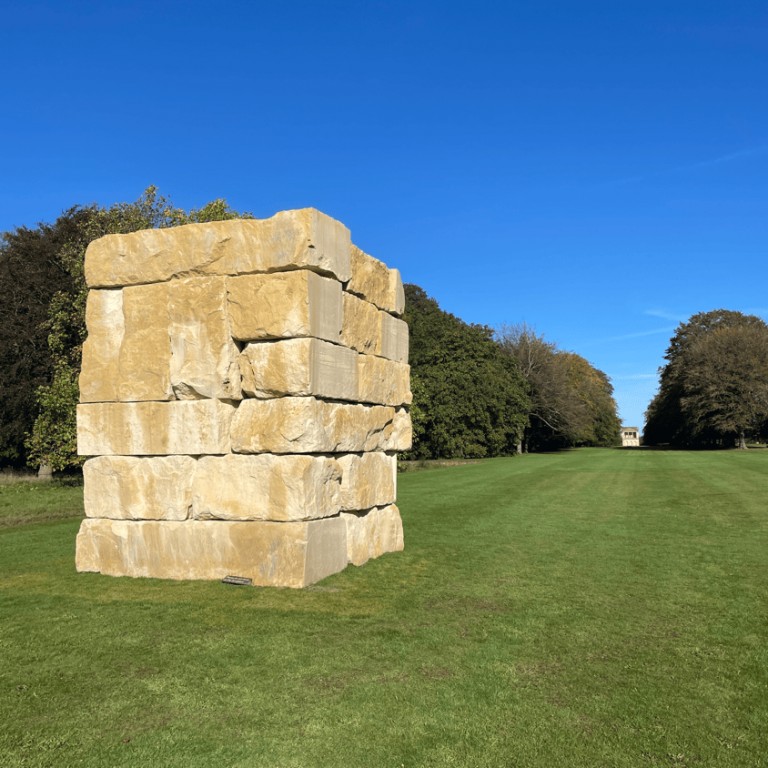
‘Tower Light Cubed’, (2023)
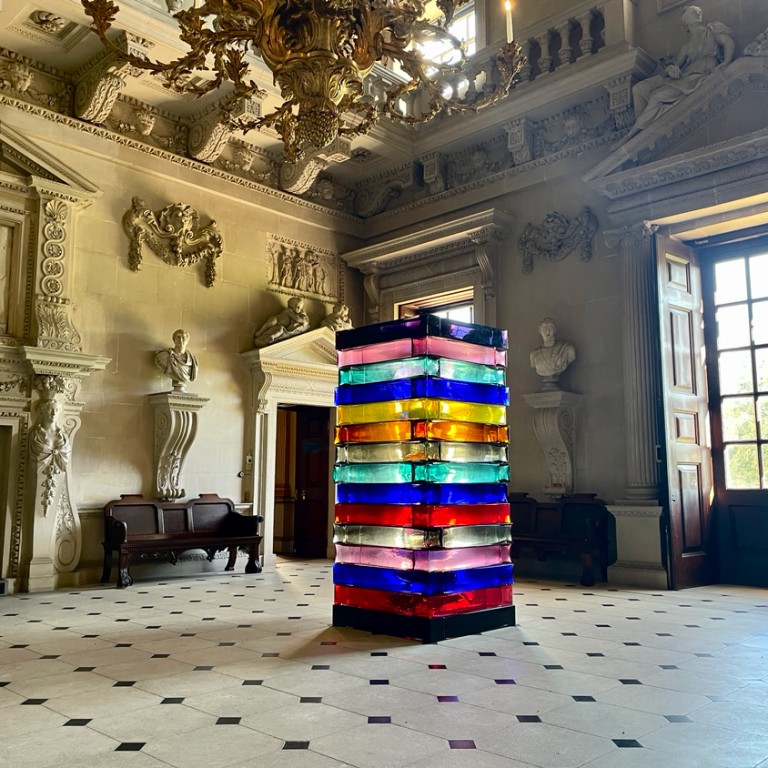
‘Venice Stack’, (2020)

‘Indoor Sleeper’, (2020)
The play of light on the different materials, coupled with the varied siting evokes very varied aesthetic and emotional responses to each piece. The sun’s effect cannot be overstated, a dull day would also have provoked yet another response in the viewer.
More than anything, what this exhibition demonstrates is that material choice has both the ability to shape artistic intent and viewer response. Interesting.